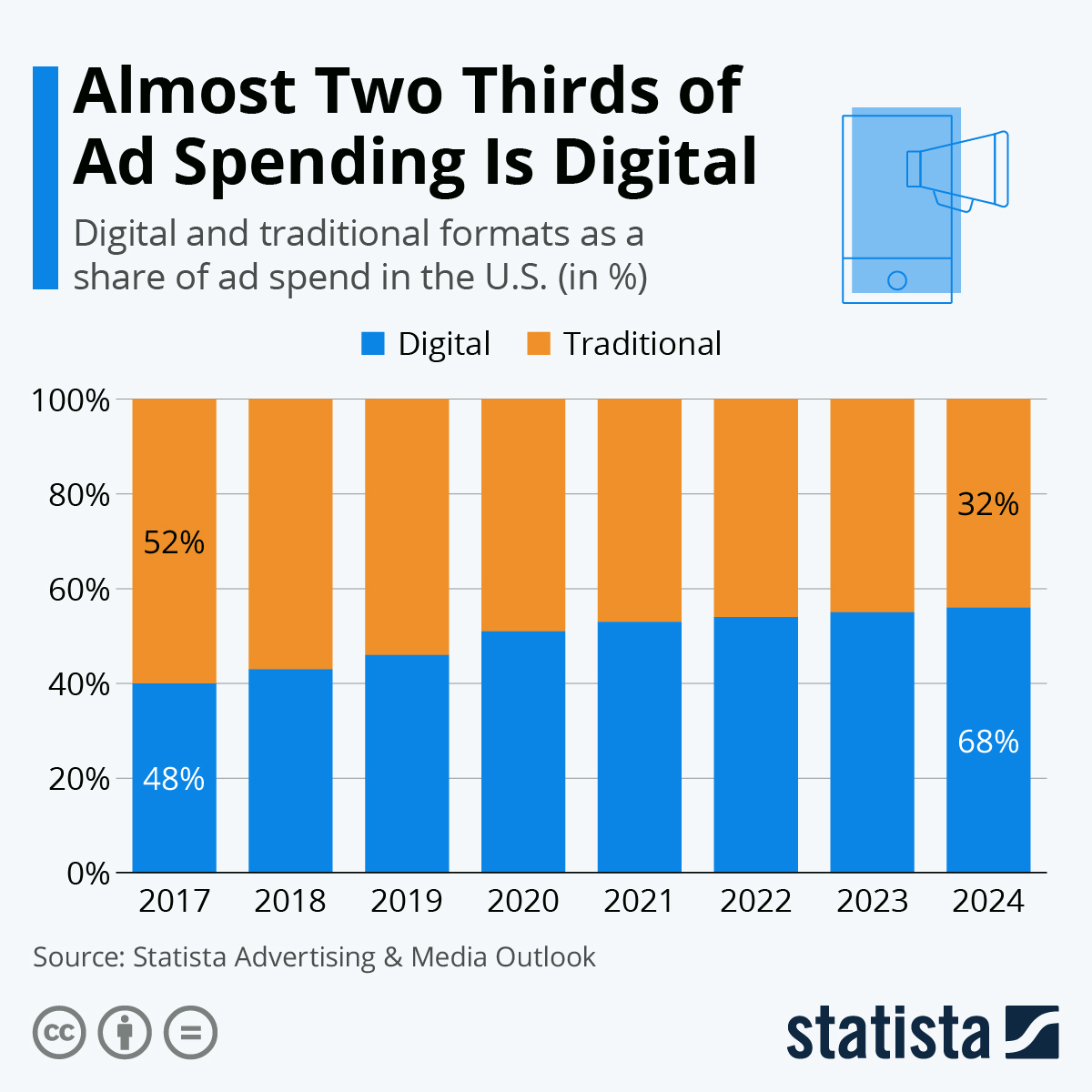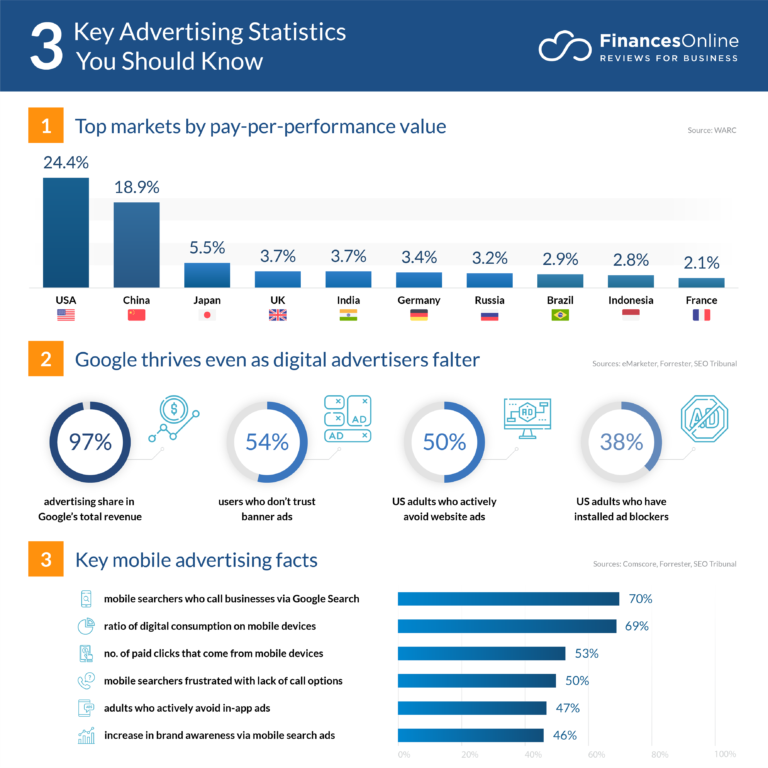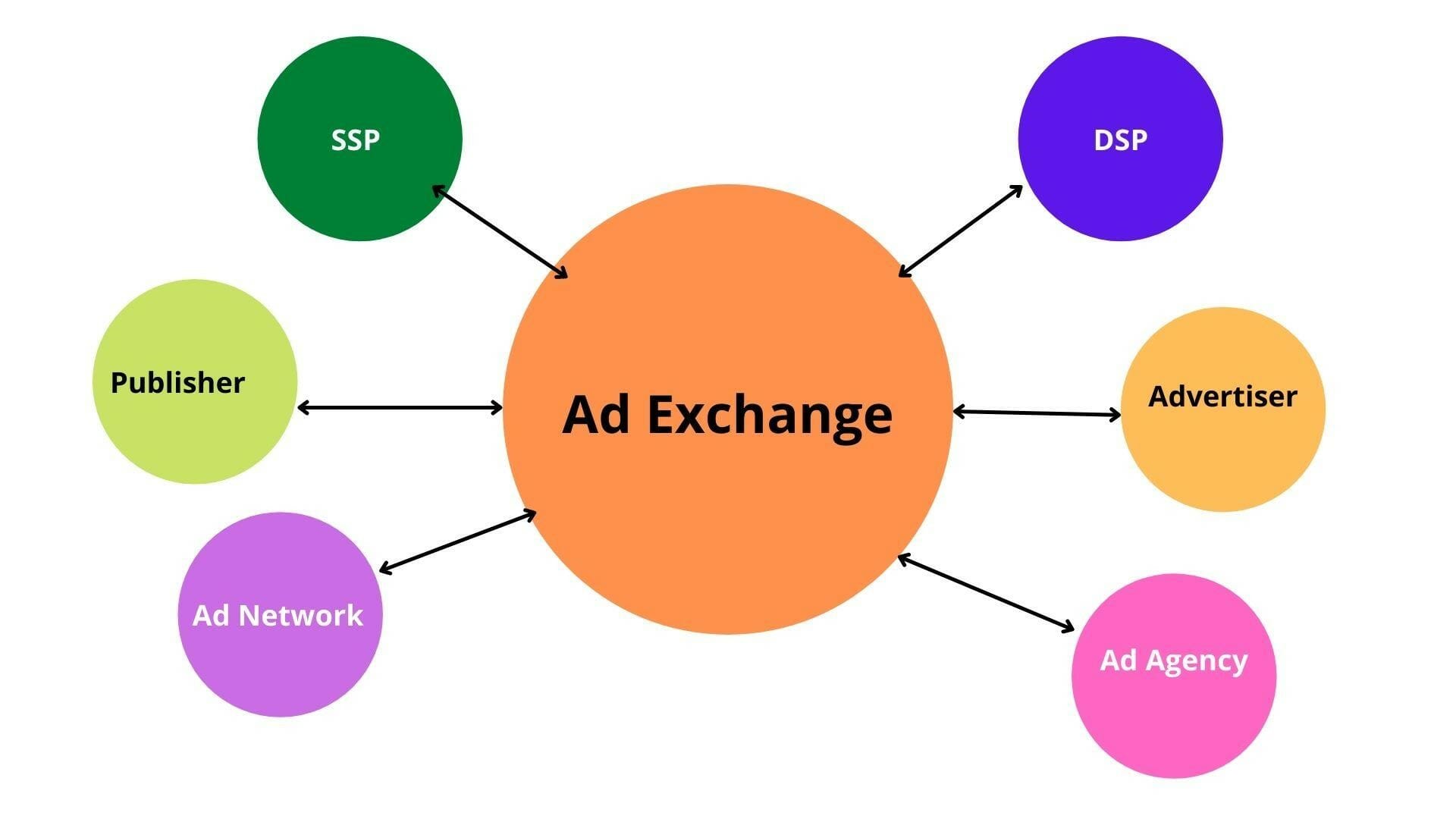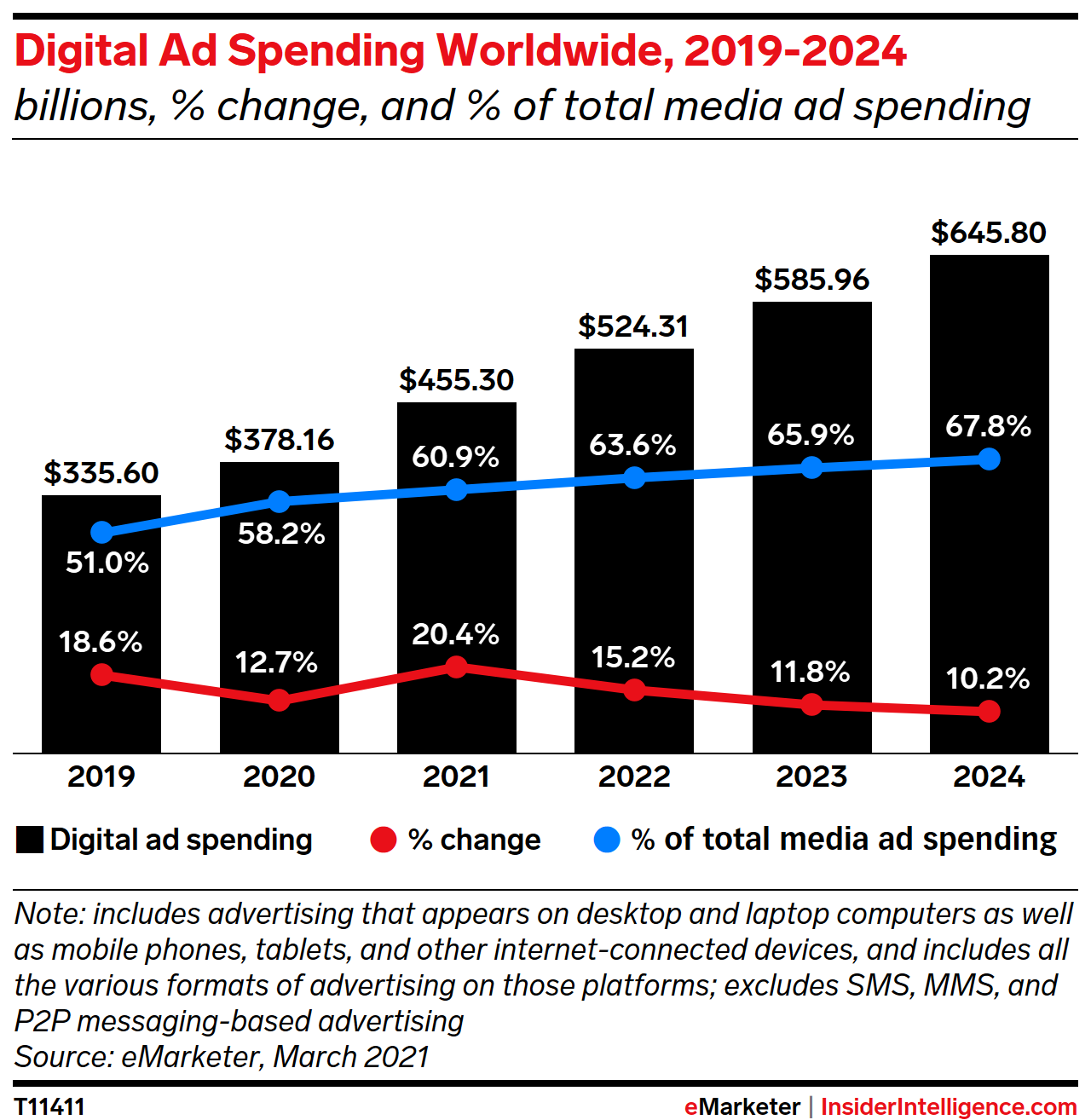What Is An Ad Network and How to Make the Most of It?
Ad Network
« Back to Glossary Index
Since the internet is all about connecting people, it is not surprising that advertisements have become a booming business. The Internet gives rise to numerous Ad Networks which offer various benefits for both advertisers and publishers.
Ad Networks have greatly aided advertisers in reaching more potential clients while allowing publishers to make money. This guide contains a detailed description of what an ad network is, how it works, why publishers benefit from Ad Networks, as well as the best Ad Networks you can join. Let’s start.
No time? Skip to the section you need
What Is an Ad Network and How Does it Work?
First, let’s explain a brief definition of an ad network:
An Ad Network is a programmatic advertising service that aggregates multiple targeted offers from a variety of advertisers and publishers into a single platform to streamline the process of buying and selling ad inventory for the best deal for both sides.
An ad network is any network that shows ads to customers when they visit certain websites or apps. It’s a common way advertisers reach customers, whether they’re buying ads for desktop or mobile applications.
Typically, the ad network shows the advertisement to users who have previously reached out to the advertiser through their social network accounts (Twitter, Facebook, Google+) or other promotional channels. It can also include third-party partners that extend its reach through special deals or automatic subscriptions received through email or social media accounts.
Publishers use ad networks to sell their inventory to the right advertisers.
So, How Does an Ad Network Work?
An ad network, in essence, is a service that mediates between advertisers and publishers. When an advertiser creates an ad campaign for the ad network helps to find the best possible audience for the campaign and then delivers the ads across various websites and blogs. Here is how it works:
- The ad network gathers the inventory of a large number of publishers on an auction basis.
- The advertiser can set the campaign directly through the ad network or use a third-party ad service. Advertisers set the campaign criteria, such as target, budget, and frequency, and the ad network finds the best publisher for the ad.
- The ad network allows rotating multiple banners on the website automatically, without contact between advertiser and publisher.
Is an Ad Network the same as an Ad Server?
Many users will confuse Ad Networks and Ad Servers since they are very similar and were introduced in the industry at the same time. However, each platform serves a different purpose.
Ad Server
It is a software solution used by Ad Networks, publishers, and advertisers to manage, run, and analyze their advertising campaigns.
You have two types of ad servers:
- First-party ad servers:
First-party ad servers provide publishers a single platform to manage their advertising space across various media channels and devices. Publishers use these solutions to manage their ad space (inventory) on their websites. For instance, the ad servers display ads sold directly by publishers and sell the unsold inventory to networks and supply-side platforms (SSPs).
- Third-party ad servers:
These types of servers help advertisers store and deliver their ads. They also measure campaign performance across channels, measuring impressions and clicks.
Ad Networks are also software solutions used both by advertisers and publishers as a way to exchange media buys.
Pricing models for Ad Networks
Each Ad Networks use different pricing models. Some Ad Networks have CPC (cost-per-click) bidding systems where publishers pay a set price for each click on an ad. Other Ad Networks have CPM systems where publishers pay when customers actually complete a sales transaction (such as buying an item from an online store). Let’s explore the different pricing models:
What Is Cost-Per-Mille (CPM)
Cost per Mille (CPM) definition: It is the amount advertisers pay per a thousand impressions of their ads.
The formula for CPM is as follows:
Cost per Thousand (CPM) Formula
CPM = (Total Amount Spent) x1000 / Total Measured Impressions
Example: Let’s say the thousand ad impressions are priced at $1.5 and the ad generates 10,000 impressions. The advertiser will pay $15.
What is Cost-Per-Click (CPC)
Cost per Click definition: It is the amount advertisers pay every time a visitor clicks on an ad on your website.
The formula for CPC is as follows:
Cost per Click (CPC) Formula
CPC = ( Total Amount Spent ) x1000 / Total Measured Clicks
Example: Let’s say if the ad is priced at $2 CPC, and the ad gets 1000 people that click on it, you get paid $2000.
What Is Cost-per-Action (CPA)
Cost per Action definition: It is the amount advertisers pay every time a visitor performs an intended action on the website.
The formula for CPA is as follows:
Cost per Click (CPA) Formula
CPC = ( Total Amount Spent ) x1000 / Total Attributed Conversions
The Advertising Network Market
The digital advertising market is growing steadily with no sign of waning, recovering from a slight hit in 2020.
According to Statista, almost ⅔ of Ad spending in the US is digital.

Image source
- The US is the largest market for pay by performance

Image source
With the digital advertising market growing, here you have key figures that let you know how the industry in which ad network move is performing:
65.3%
Of global online ad investment was from programmatic advertising
Organizations make $2 of each $1 spent on Google Ads
$786 billion
Is the estimated worth of the Digital Advertising Market by 2026
15%
Is the projected growth of Display Advertising by 2026
12.2%
Is the projected growth of Search Advertising by 2026
Statistics source
Ad Network vs Ad Exchange
They may seem similar but ad networks and ad exchanges are different types of solutions.
Ad Network

Ad networks act as intermediaries connecting publishers and advertisers. Publishers send their inventory to the ad network which allocates it to advertisers on an auction basis.
Publishers can connect to multiple ad networks to maximize their options to sell their inventory.
Ad Exchange
Ad exchanges are online marketplaces. Advertisers, publishers, agencies, ad networks, Demand Side Platforms, and Supply Side Platform, buy and sell ad inventory without intermediaries.
Ad exchanges run auctions by using real-time bidding technology, then sell inventory to the highest bidder based on impressions.

So, what’s the difference?
Ad networks can filter the inventory according to advertisers’ requirements and targeting. Ad exchanges provide the framework for all the parties to trade between themselves. In short, ad networks are one of the actors that use ad exchanges for trading ad inventory.
Here are some more differences:
Ad Network
Ad Exchange
Type of entity
Company
Technological platform
Pricing
The inventory cost is stable as it is determined by the ad network.
The cost is variable, based on the bids from advertisers during a real-time bidding auction.
Transparency
Varies according to the network. In some, advertisers don’t know where their ads are served and publishers don’t know who buys their inventory.
It is transparent because is a marketplace. Some ad exchanges allow advertisers to see competitor’s bids.
Inventory
More high-quality, first-tier inventory.
Offers all types of inventories.
Types of Ad Networks
Premium Ad Networks: These networks offer inventory from top-rated and popular publishers.
Vertical networks: These networks are industry-specific. For instance, for SaaS companies, retailers, fashion, and so on.
Blind networks: These networks don’t allow advertisers to choose the website where their ads will appear. These networks focus on massive reach, offering advertisers the opportunity to reach millions of Internet users.
Performance and Affiliate Ad Networks: Networks that focus on a specific pricing model, like CPC or CPA.
Targeted networks: These Next Generation ad networks, use specific targeting technologies like behavioral or contextual to reach specific audiences.
Specialized or Inventory-Specific Ad Networks: Focused on a specific type of inventory, for example, video or native ads.
Why are Ad Networks important? 5 Reasons
Ad Networks to help businesses advertise their products or services and publishers to make money. While there are hundreds of these networks, only a select few provide publishers with an easy and efficient way to reach potential consumers. With so many Ad Networks available, finding the one that’s right for you can be tough. To help you identify the best networks for your business, we’ve put together a list of four reasons that drive us.
- Reach: Ad networks allow advertisers to reach a broad audience and publishers, connecting with a wide pool of buyers.
- Easy for advertisers to target audiences: Ad networks offer several targeting options. Advertisers can target according to content type, device, demographics, behavior, location.
- Cost efficiency: Advertisers can negotiate prices for bulk buys. Ad networks usually pay publishers quickly.
- Flexibility: Ad networks offer flexible pricing models, including CPC and CPM. Each network is different in the degree of control they offer advertisers and publishers.
- Convenient and time-saver: Ad networks are easy to use and allow publishers to quickly monetize their inventory. Small publishers can benefit from the opportunity of high targeting.
Statistics
Ad networks are becoming increasingly popular among advertisers and publishers.

Source
- Digital ad spending is expected to rise to over $645 billion by 2024.
- 68% of digital marketers say that paid advertising is extremely important to their marketing strategy (HubSpot 2020)
- Google’s display network reaches over 90% of internet users worldwide.
What to Look for When Choosing an Ad Network
When a large part of the advertisers’ spending goes to programmatic fees, advertisers want to be sure they are spending money wisely on partners that can target their audience. Here are some of the factors you need to consider when choosing an ad network program.
- Demand and inventory: As a publisher, check what type of demand the ad network is offering, the target segments, and the reach they have. You also should check the type of inventory they carry, so you know they are a fit.
- What ad formats are available?: Advertisers should look for a solution that allows creating attractive ads that will catch the attention of your audience. Mobile and video formats are a good addition since mobile advertising is now over half of digital media consumption.
- Targeting capabilities: Choose a solution that can give you targeting options: geotargeting, by device, by time, by URL, browser type, and others. A platform that gives you retargeting options is a good choice.
- Reports, analytics, and forecasting: Advertisers should choose a solution that gives accurate reporting so they can know where their money is going and how the ads are performing. Publishers need solid analytics to understand the value of their impressions.
- Protection against ad fraud: Sadly, ad fraud is a reality. Choose the solution that has protections in place against false clicks.
- Easy to use: The platform should be easy to use to take the advantage of programmatic advertising real-time bidding.
Top Ad Networks for Publishers
An ad network sells space on your website(s) to third-party Ad Networks. These networks include; Google Adsense, Facebook (Adsense), Bing (Adsense + MX), Tumblr, and others. They display adverts (and sometimes coupons) in exchange for payments from publishers whose ads are shown on the network (usually based on a tracker program called Google Adsense Wallet).
CodeFuel is a turnkey solution that lets you drive revenue from your digital properties. We enable you to leverage ads on your site, monetize through search and shopping, and optimize through the news.
Add the power of search to your app, search engine, mobile launcher, browser, or extension. Our proprietary search technology utilizes one of our premium search partners for maximum revenue generation. CodeFuel offers the advantage of user intent-based targeting to provide highly targeted contextual ads for your audience.
Contact Us and Start Today!
AdSense provides publishers with a way to monetize their online content. The platform matches ads to your site based on the content and type of audience. While AdSense provides a massive reach, it is not very suitable for companies that need specific targeting. If you want to target a specific audience, a smaller ad network can be a better choice.
It’s an advertising platform that services direct advertisers, media buyers, and agencies. They partner with supply-side platforms and direct publishers. It has live reporting and a wide reach. On the downside, it works better for US local companies and if you are in the right niche. It has strict requirements for publishers.
How Can Ad Networks Benefit Advertisers and Publishers?
The short answer: advertisers get access to a huge pool of potential customers for a much lower cost than getting those people directly. By getting access to so many potential customers, and an ad network can offer an advertiser a much better return on your investment than seeing just a few hundred people who look like they could be your potential customers purchasing your products and services.
Publishers
The obvious benefit is the opportunity to monetize their content and sites, including inventory that wasn’t sold directly. Publishers use d networks to find advertisers that are interested in their content and the real-time bidding ensures they are getting the highest paying advertiser.
Advertisers
They benefit from an ad network by being able to buy inventory in bulk and ensuring their ads appear before targeted audiences. The platform saves time since the advertiser only needs to set up the campaign once.
How the Ad Networks of the Future Will Look Like?
Things are going to change in the Ad Tech industry, with the elimination of third-party cookies and increased privacy regulations. This will lead to a division into two distinctive target audiences types: the authenticated and the anonymous. The first group will be based on the data provided by the users, while the second can be done programmatically.
This situation can lead to an increase in vertical ad networks, that can target users through contextual campaigns. Contextual advertising will be more important and can be more effective in the future for advertisers.
How advertisers expand their reach and effectiveness
You can only improve what you can measure, the saying goes, and it is true for advertising too. Ads should be targeted to the audience, managed, and measurable to be successful. Still, expanding their reach is a constant concern for advertisers looking for new customers.
Here are some tips for advertisers:
- Target related audiences: check the audiences adjacent to yours. Many times audiences overlap and you can reach new customers.
- Check fandoms: fans of popular culture media or other brands that are related to your product can offer a fresh audience to target.
- Target influencer’s followers: find influencers in your niche and target their followers.
- If it isn’t broke, don’t fix it: find out what is working in your advertising strategy and invest more resources to reach broader audiences that may be a good fit.
3 Tips to Make Money With Ads
Publishers and content creators look for ways to monetize their content and digital properties. One of the most effective ways to make money out of your website or blog is to include ads. Here are three ways you can make money with ads on your website:
- Invest in your website content and design
The more value your content provides to customers, the more visitors you will have. Ultimately, your website is attractive to advertisers if provides valuable potential customers that click on their ads.
- Use organic-traffic building website marketing techniques
Use SEO and content marketing techniques to driving free traffic to your site. Don’t incentivize the traffic to the ads in any way. Clicking on your own ads or give incentives in exchange for clicks can get you in trouble with Google.
- Max out the ad placement
The ideal is to use the mix of types and placements that lead to the most income. Test different combinations until you get the right options. Use the maximum number of ads allowed per page.
FAQ’s About Ad Networks
-
What are Mobile Ad Networks?
Mobile Ad Networks are services that target exclusively mobile traffic and ads. Mobile advertising has grown increasingly in the last few years. Mobile ad networks give advertisers the opportunity to reach customers on their mobile phones. This is a good chance for application developers and responsive websites looking to monetize their properties.
-
How Do Ad Networks Make Money?
Ad networks generate revenue by selling the inventory at a profit (a higher price than what they paid for it). The network usually takes a percentage from every transaction.
-
What is PPC Ad Network?
Pay Per Click ( PPC) is a pricing model used by Advertising Networks. Also called Cost per Click, in this model, advertisers pay publishers every time a visitor clicks on an ad on their site. There are two basic PPC rates:
- Flat rate: advertisers and the ad network agree on a flat-rate price per click.
- Bid-based: several advertisers bid how much they are willing to pay for each ad position on the publisher’s web pages in a real-time auction. In programmatic advertising, advertisers set their rates when setting up the campaign and the ad network software takes care of everything. The whole process happens in seconds.
-
What is eCPM?
Effective Cost-per-Mille is a metric used by advertisers to know how much is the actual cost of advertising.
The eCPM formula is as follows:
(Cost-per-Click (CPC) x Click-Trough-Rate (CTR)) x 1000.
Why Pick CodeFuel as Your Ad Network?
CodeFuel is a full-service ad network company. We help app publishers maximize their revenue across multiple platforms and devices. Our solution allows advertising companies to buy and sell media, in real-time, on your websites.
With CodeFuel you can monetize your website, your mobile application, or browser extension with targeted intent-based contextual ads. This ensures highly performing ads on your website or application, which enrich the customer experience and increase the monetization of your property. Start monetizing today with CodeFuel.
« Back to Glossary Index















![Toni Kroos là ai? [ sự thật về tiểu sử đầy đủ Toni Kroos ]](https://evbn.org/wp-content/uploads/New-Project-6635-1671934592.jpg)


